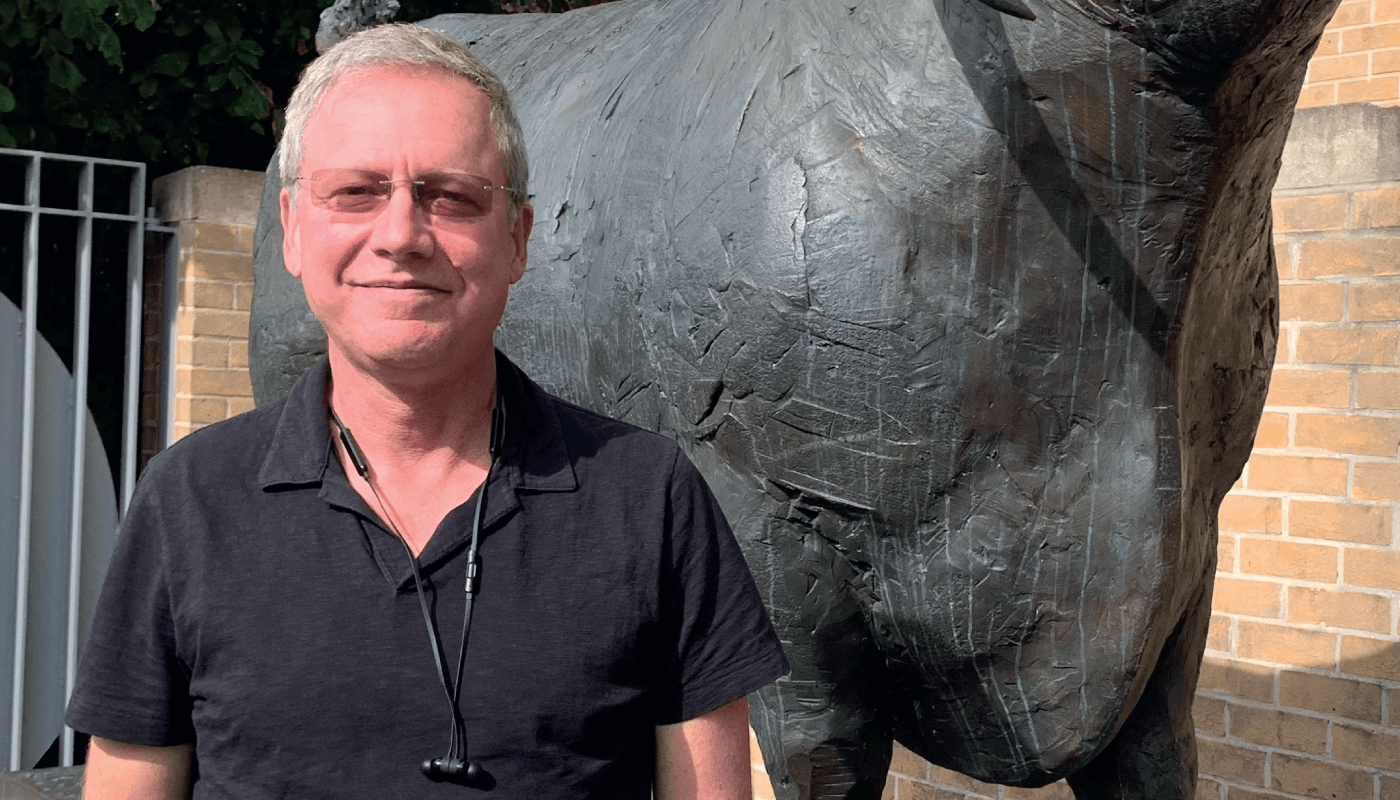Our work, in collaboration with Martin Jarrold’s group at Indiana University, is centered around a powerful new technique: charge-detection MS (CDMS), which works by detecting exact charges of individual particles. As readers may know, determination of mass from electrospray-based measurements of the mass-to-charge (m/z) ratio requires that each different m/z peak can be resolved and assigned as a specific charge. As particle mass increases, the ability to resolve and assign m/z peaks becomes prohibitively difficult – especially for complex mixtures. By detecting both the m/z and z for each ion, CDMS eliminates this limitation – allowing the determination of masses for particles in the megadalton to gigadalton size range, and beyond.

The CDMS detection technology that we use was developed by Martin Jarrold’s group in the early 2010s, and is now undergoing commercialization via a startup company (Megadalton Solutions) founded by Martin and me in 2018, along with Martin's former graduate student Benjamin Draper.
Since the pandemic hit, our research groups have collaborated to measure the exact mass of the SARS-CoV-2 spike protein via CDMS. The spike is a protein trimer responsible for recognizing host cell receptors and facilitating infection; there are hundreds of spikes on each virus particle, and each monomer is associated with 22 N-glycosylation sites. Knowledge of spike-bound glycan molecules may prove essential in targeting the spike protein’s “sweet spot” and disabling infection. At first glance, one might think this a straightforward task, but it is complicated by incredibly heterogeneous glycan profiles.
Amidst this pandemic, the spike protein region is attracting considerable attention as a potential target for therapeutics and vaccines. Other groups are also exploring a range of alternative angles to develop a vaccine; for example, placing the viral genome in an AAV capsid (or another vector) for delivery. In all of these treatment and vaccine endeavors, the ability to measure the mass of the huge particles involved will be of great benefit.
Another interesting application of CDMS lies in the field of gene therapy. These treatments hold the potential to counteract some devastating – and often rare – diseases; in 2018, ~2,400 gene therapies were at some stage of clinical trial. Our startup, Megadalton Solutions, uses CDMS to check whether or not adeno-associated viruses designed for therapeutic purposes contain the correct genome, by measuring the precise mass of the filled and empty capsules. These therapies generally have masses below 10 megadaltons, but we have recently measured viral vectors of up to hundreds of megadaltons.
At present, Martin’s CDMS measurements can be made in only a few academic labs around the world. There is, however, clear interest in creating commercial instruments and we look forward to seeing it in widespread use in the future. Think of the story of coupling ion mobility spectrometry (IMS) with MS; Waters commercialized IMS-MS in 2006, and commercial IMS instruments are now used for countless applications in labs around the world. Yet, CDMS is a very different technology in that it enables measurements in a mass region that has never been explored. As such, it has the potential to transform our understanding of a number of booming areas of research, ranging from therapeutics to plastic degradation, and phenomena like virus assembly and antibody aggregation.
But right now, our focus is to contribute in any way we can to the global fight against SARS-CoV-2. While I recognize the tremendous complexity and challenge that this virus presents, I am cautiously optimistic that the combined efforts of talented scientists will lead to better treatments – and potentially safe and efficacious vaccines. I also recognize that the associated societal changes are difficult for many; however, every week that we delay major outbreaks is critical for advancing treatments.




